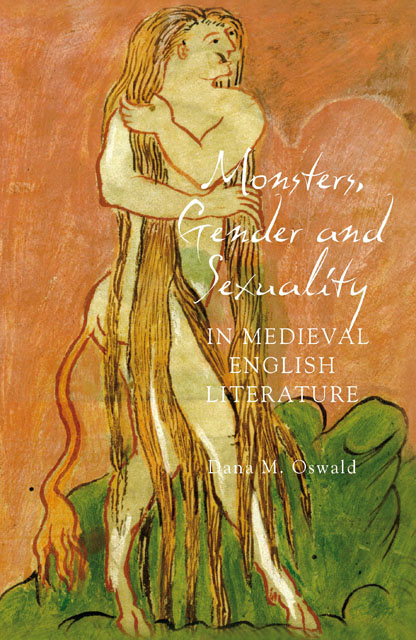Book contents
- Frontmatter
- Contents
- Dedication
- Acknowledgements
- List of Figures
- Introduction: Sex and the Single Monster
- 1 The Indecent Bodies of the Wonders of the East
- 2 Dismemberment as Erasure: the Monstrous Body in Beowulf
- 3 Circulation and Transformation: The Monstrous Feminine in Mandeville’s Travels
- 4 Paternity and Monstrosity in the Alliterative Morte Arthure and Sir Gowther
- Conclusion: Transformation and the Trace of the Monster
- Bibliography
- Index
Conclusion: Transformation and the Trace of the Monster
Published online by Cambridge University Press: 01 March 2023
- Frontmatter
- Contents
- Dedication
- Acknowledgements
- List of Figures
- Introduction: Sex and the Single Monster
- 1 The Indecent Bodies of the Wonders of the East
- 2 Dismemberment as Erasure: the Monstrous Body in Beowulf
- 3 Circulation and Transformation: The Monstrous Feminine in Mandeville’s Travels
- 4 Paternity and Monstrosity in the Alliterative Morte Arthure and Sir Gowther
- Conclusion: Transformation and the Trace of the Monster
- Bibliography
- Index
Summary
I BEGAN THIS BOOK with a description of Johannes Hartlieb's painting of Alexander the Great, in which Alexander is depicted with tusks. This fifteenth century painting presents us with an Alexander dressed in the trappings of nobility, but whose hair is disheveled and whose body has been infiltrated by the monstrous creatures he so desired to witness, report, and dominate. Although Alexander is the prototypical conqueror, the invader, in this image it is his own body that has been invaded and colonized by the monstrous. This portrait shows Alexander as a human whose body is no longer completely human after prolonged exposure to the monstrous East. He is now a hybrid creature, a monster whose body is both animal and human – but he is also transformative. His once-human body is shown to have been porous, susceptible, open to dangerous outside influences. The boundaries of his body have been breached and the myth of its integrity exploded. This tusked Alexander shows us that the monstrous is contaminative, but also demonstrates that the category of humanity is not discrete; its boundaries, like the limits of Alexander's body, are flexible and contingent. If a human body can be changed to a monstrous one, then humanity itself is in danger of contagion and perhaps disintegration.
The tusked Alexander is a warning – against excessive pride and greed, probably; perhaps against colonization; but certainly against contact with the Other. He warns that influence moves in both directions, that conquering and conversion leave one's body and indeed one's society open to outside influences. The safeguards of the body and society can be and have been breached. Neither is any longer impermeable and permanent; both are subject to invasion and change. Transformation, in the fifteenth century, is not only possible and imminent, it is underway.
But this representation of Alexander is only one piece of a larger cultural and historical puzzle. The portrait reveals late medieval attitudes toward the body and toward the monster, showing that transformation is possible, and that human bodies and human communities are not immune to the influence and indeed ‘contamination’ of the monster.
- Type
- Chapter
- Information
- Monsters, Gender and Sexuality in Medieval English Literature , pp. 197 - 208Publisher: Boydell & BrewerPrint publication year: 2010



